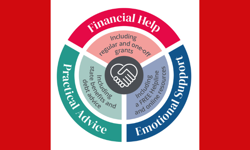They now realise that they must partner in the digital content arena to take control of their futures. The alternative is to sit back and let Amazon.com, Apple and other players control the devices and transactional channels for accessing paid content, reducing publishers to some cut of the take rather than the full, direct sales of their own intellectual property.
Their worst nightmare is a scenario akin to the one in the music industry, which dithered in jumping into digital and now finds itself accepting relative financial crumbs from Apple’s money-minting iTunes business. Not to mention still fighting the Sisyphean battle against pirating.
The accompanying epiphany for consumer magazine publishers is that, while getting consumers to pay for traditional article content while browsing the web on their desktops or full-sized laptops has proved more or less futile, consumers are proving willing to pay for at least some types of digital content if it’s available through a mobile application.
Apple’s model of controlling paid access, through its Apple Store, to iTunes music selections and now 50,000+ “apps” for the iPhone and iPod Touch, provides ample evidence of this.
But perhaps the real wake-up call for publishers has been the growing success of ereaders, and specifically Amazon’s Kindle. Citi analyst Mark Mahaney estimates that cumulative Kindle devices sold will reach about 1.5 million this year, and 4.4 million by year-end 2010. He projects sales of ebooks for the Kindle at $189 million in 2009, and $612 million by next year (and total Kindle revenue of $1.2 billion, with device sales included).
While total ebooks (not just Kindle) currently account for only about 5% of total US book sales of over $24 billion (not forgetting that they’re priced at about half of new hardcover books), that share is rising rapidly each year. 2008’s ebook sales of $113 million represented 68.4% growth over ’07, per the Association of American Publishers.
The Kindle and the Sony Reader currently lack colour and therefore the ability to replicate four-colour ads. But B&N’s new nook, while not full-colour, has a colour navigation screen. And rumoured leaps forward in user-friendliness for the looming Apple tablet include a colour, touch-enabled screen.
Joining forces?
All of which, at least according to the bits and pieces that have leaked out thus far, has spurred Time Inc, Condé Nast and Hearst (and possibly Meredith Corp) to create a “consortium” to develop a digital store and an ereader capable of doing justice to the traditional magazine format, and also deliver newspaper content. At this writing in late October, a first official announcement is said to be only weeks away.
During the Magazine Publishers of America’s October Innovation Summit, Time Inc EVP John Squires acknowledged “conversations” about such an initiative but kept further remarks theoretical. “If someone were to create a set of standards and have a common reading experience and hopefully an app platform that integrates with that — and maybe a storefront by which consumers could buy it — I think that would be a good business,” he said.
However, Squires wasn’t vague about agreeing that publishers should protect their content, or about a strategic shift to pursuing paid content. “In the end, you have to have the guts to say ‘my content is worth something,’ and that I’m not going to give it away for free,” he declared.
Meanwhile, in a speech at CircDay LA, also in October, Hearst Magazines EVP John Loughlin made no mention of a consortium or other publishers. However, he said that he’s “convinced” that a commercially viable ereader that “extends to magazines” will be available within the next four to eight months, and acknowledged prototypes in the works, though only in relation to Hearst. His “envisioned” device would be magazine-sized, “not thicker than a pad of paper,” ergonomically “elegant,” and designed to showcase magazine’s rich design and let users readily enjoy and navigate within in-depth content. He hinted that colour, or at least high-quality colour, might not be available until the end of 2010.
Loughlin said that there likely will be “dozens” of ereading devices in the marketplace. According to a report by the Financial Times, the consortium’s goal is to enable technology-agnostic content, and the digital store will be structured like the video service Hulu.
Nor are these major players the only ones on the trail of paid, mobile content streams. In a recent Audit Bureau of Circulations member survey, one third of consumer magazine publishers (along with about 10% of B2Bs and 30% of newspapers) said that they’re pursuing strategic relationships with ereader manufacturers. About 40% of respondents said they think ereaders will be a vital channel for distributing their publications within three years, and half said the same about smart phones. Indeed, Condé has now announced its own combined app/reader for iPhone content.
Over the years, individual consumer publishers absorbed in head-to-head competition have failed to market the magazine medium or category as a whole to media buyers and retailers. It’s good to see them cooperate in an area vital to the industry’s future.










